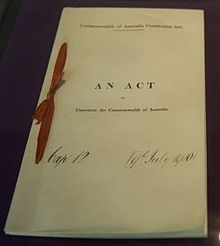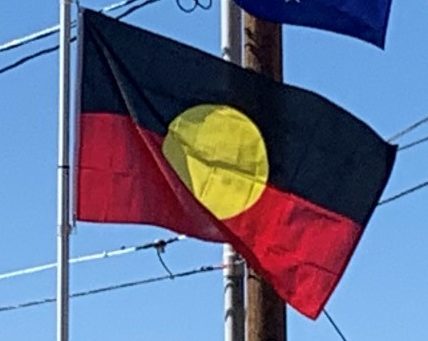The Constitution of Australia, in its original form as of 1901, referred to Aboriginals twice, but without definition. Section 51(xxvi) gave the Commonwealth parliament a power to legislate with respect to “the people of any race” throughout the Commonwealth, except for people of “the aboriginal race”. The purpose of this provision was to give the Commonwealth power to regulate non-white immigrant workers, who would follow work opportunities interstate. The only other reference, Section 127, provided that “aboriginal natives shall not be counted” in reckoning the size of the population of the Commonwealth or any part of it. The purpose of Section 127 was to prevent the inclusion of Aboriginal people in Section 24 determinations of the distribution of House of Representatives seats among the states and territories.

After these references were removed by the 1967 referendum, the Australian Constitution had no references to Aboriginals. Since that time, there have been a number of proposals to amend the constitution to specifically mention Indigenous Australians.
The change to Section 51(xxvi) enabled the Commonwealth parliament to enact laws specifically with respect to Aboriginal peoples as a “race”. In the Tasmanian Dam Case of 1983, the High Court of Australia was asked to determine whether Commonwealth legislation, whose application could relate to Aboriginal people—parts of the World Heritage Properties Conservation Act 1983 (Cth) as well as related legislation—was supported by Section 51(xxvi) in its new form. The case concerned an application of legislation that would preserve the cultural heritage of Aboriginal Tasmanians. It was held that Aboriginal Australians and Torres Strait Islanders, together or separately, and any part of either, could be regarded as a “race” for this purpose. As to the criteria for identifying a person as a member of such a “race”, the definition by Justice Deane has become accepted as current law. Deane said:
It is unnecessary, for the purposes of the present case, to consider the meaning to be given to the phrase “people of any race” in s. 51(xxvi). Plainly, the words have a wide and non-technical meaning … . The phrase is, in my view, apposite to refer to all Australian Aboriginals collectively. Any doubt, which might otherwise exist in that regard, is removed by reference to the wording of par. (xxvi) in its original form. The phrase is also apposite to refer to any identifiable racial sub-group among Australian Aboriginals. By “Australian Aboriginal” I mean, in accordance with what I understand to be the conventional meaning of that term, a person of Aboriginal descent, albeit mixed, who identifies himself as such and who is recognized by the Aboriginal community as an Aboriginal.

While Deane’s three-part definition reaches beyond the biological criterion to an individual’s self-identification, it has been criticized as continuing to accept the biological criterion as primary. It has been found difficult to apply, both in each of its parts and as to the relations among the parts; biological “descent” has been a fall-back criterion.
